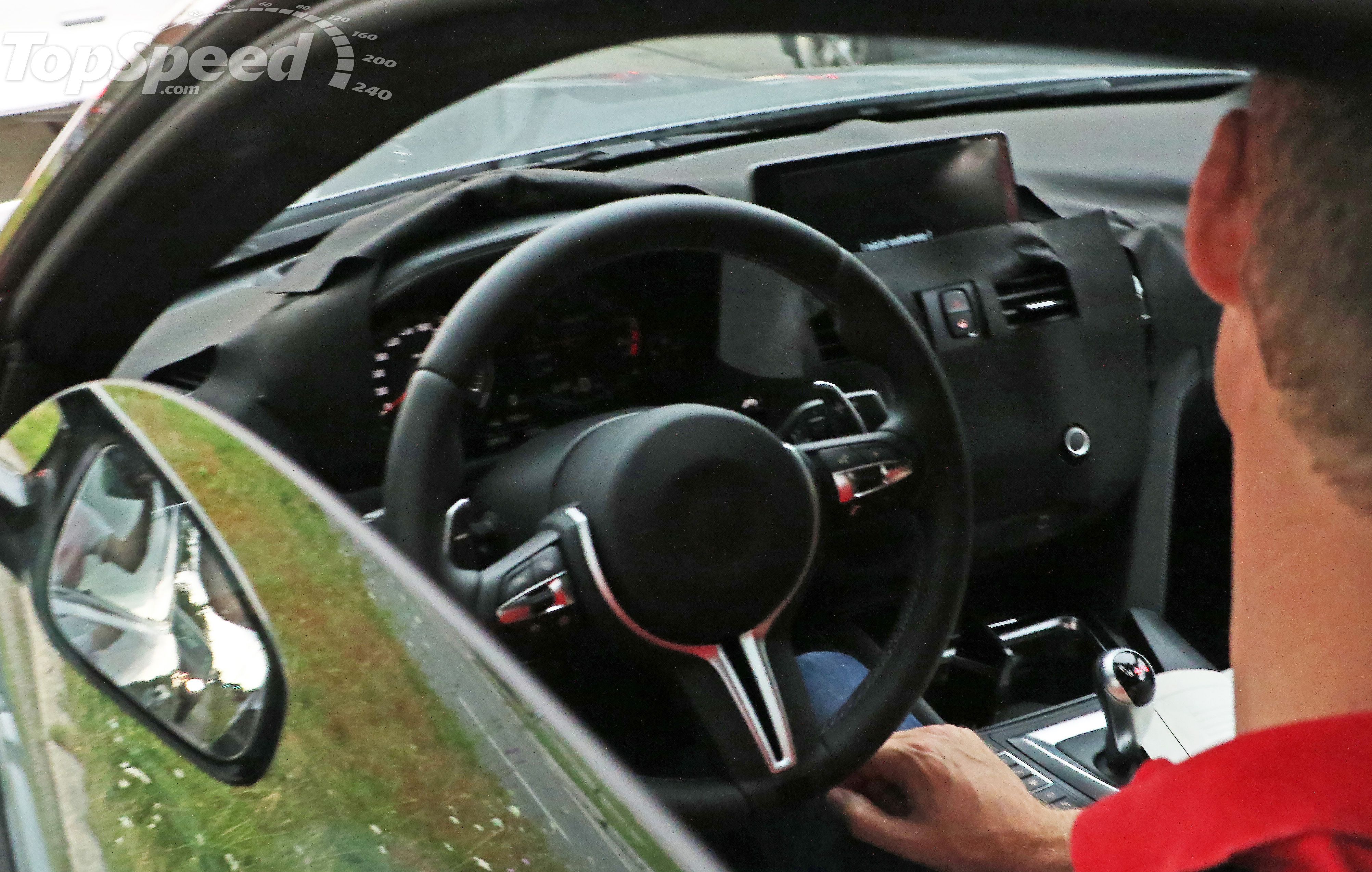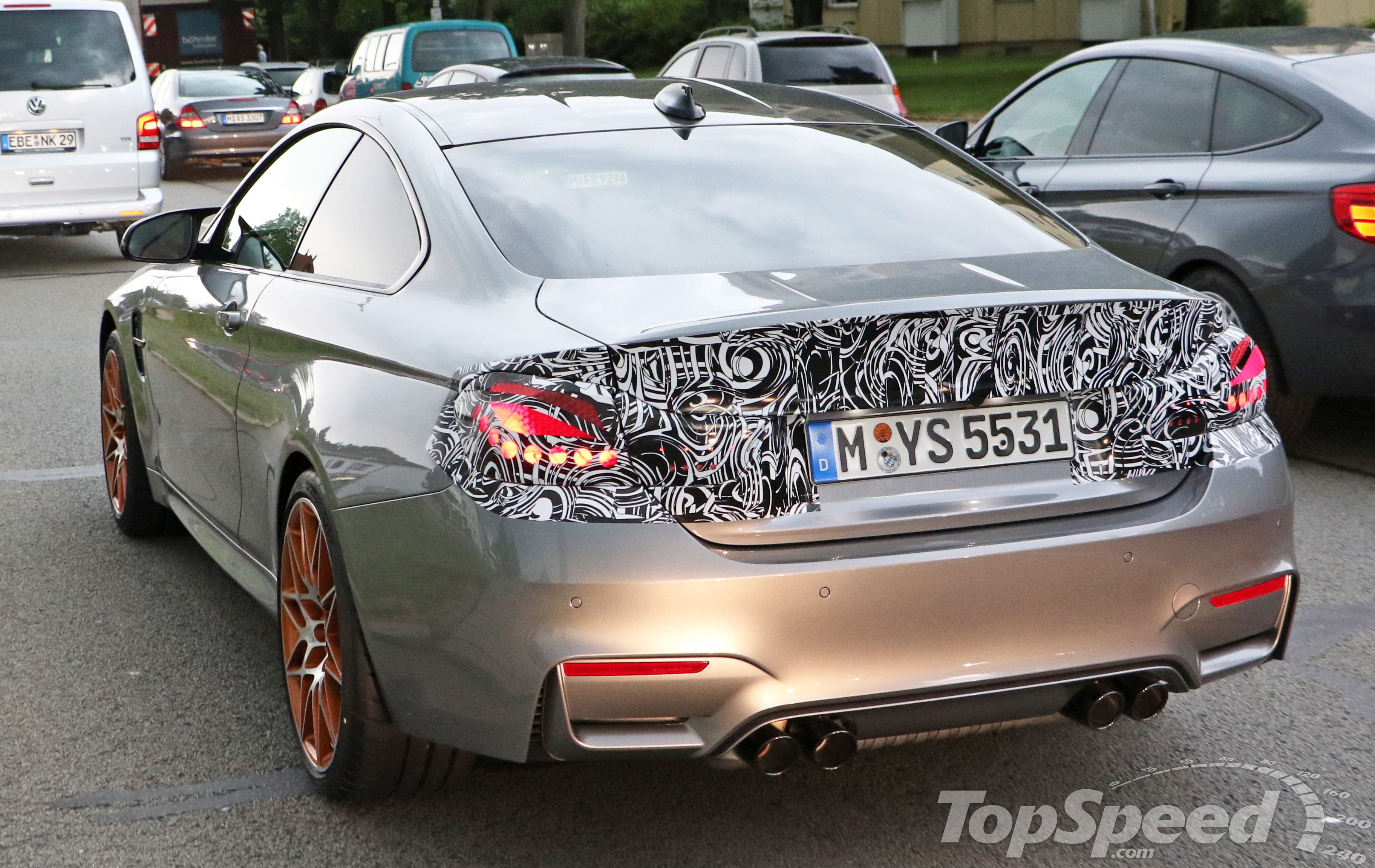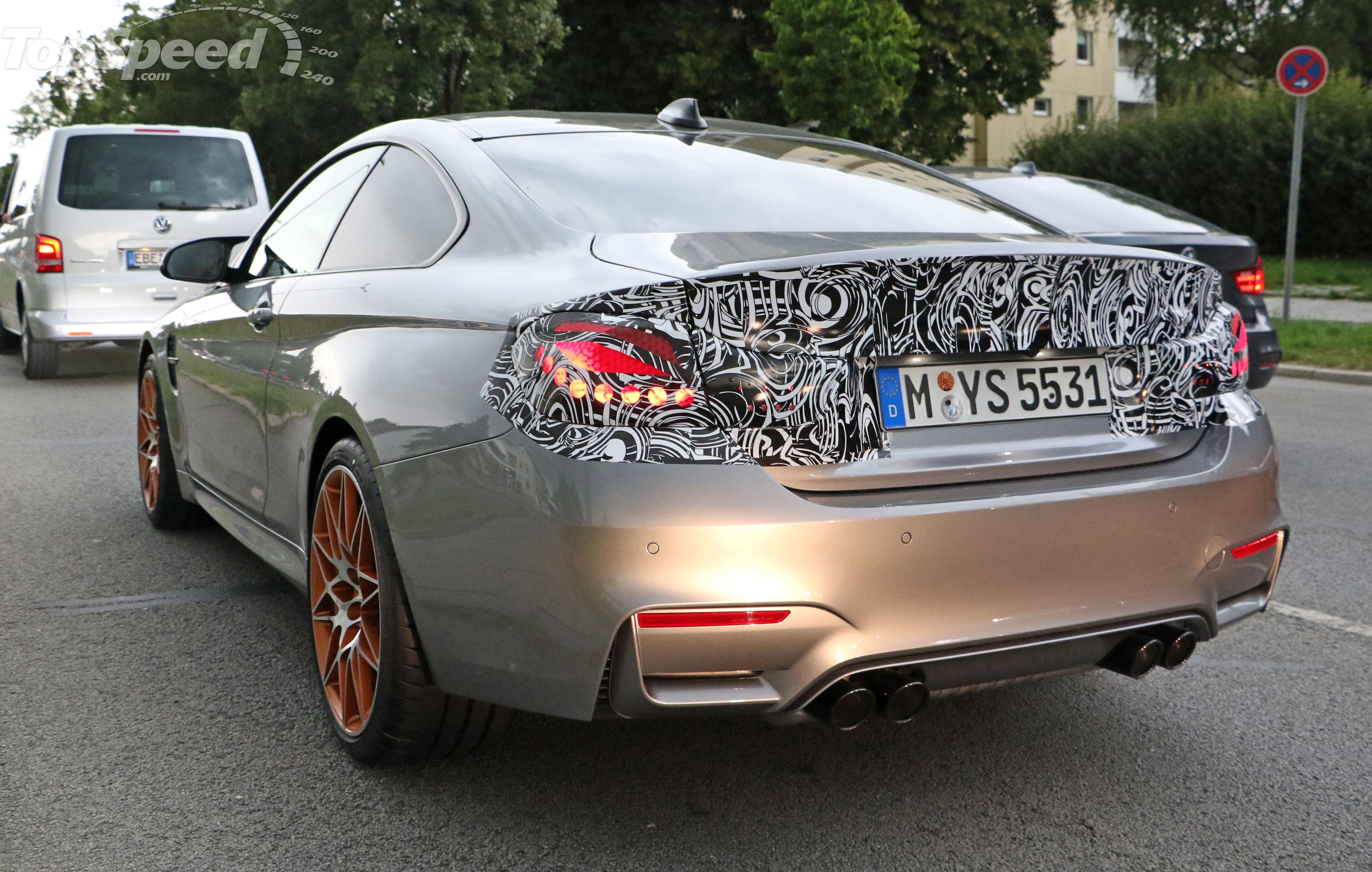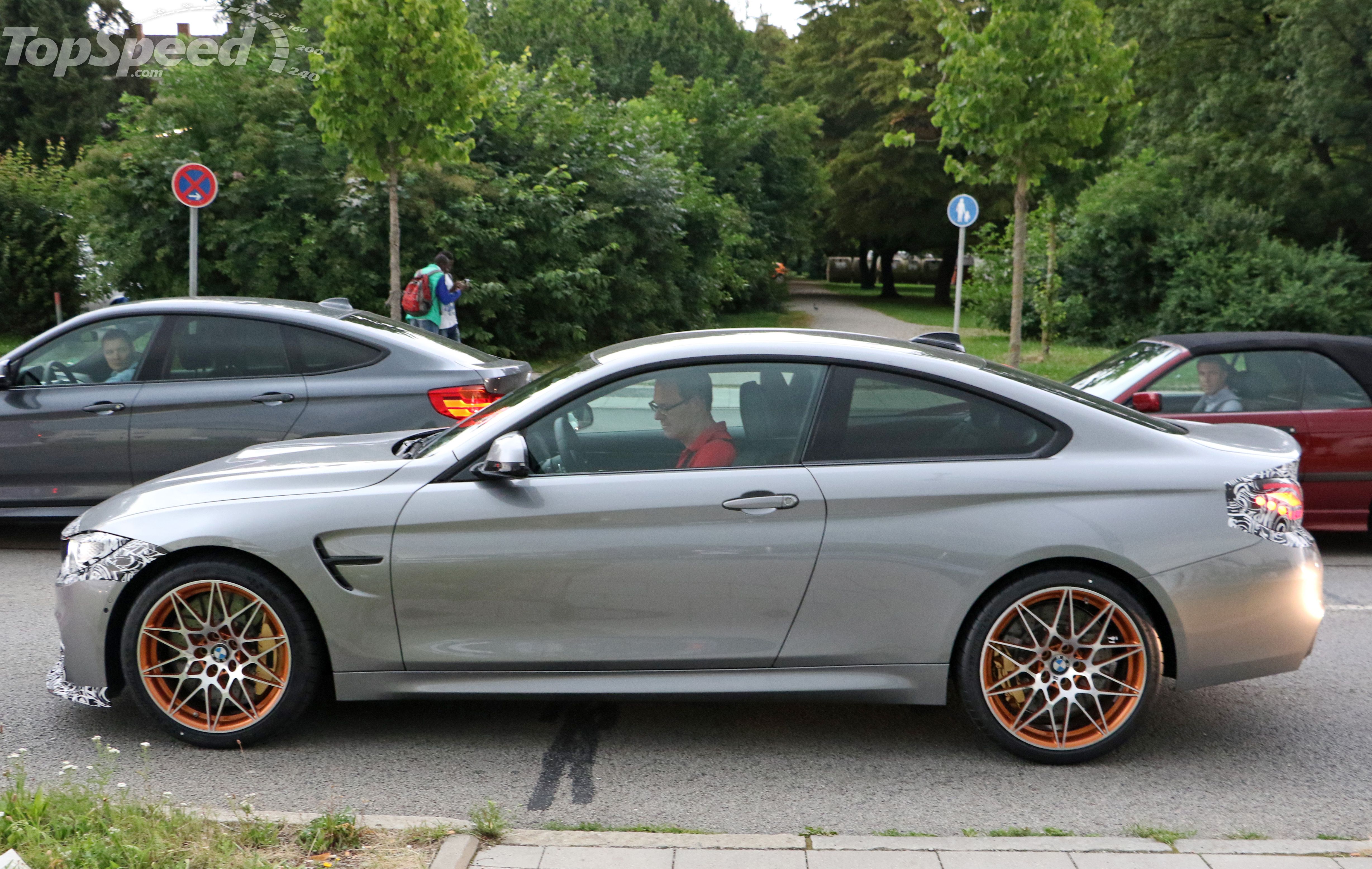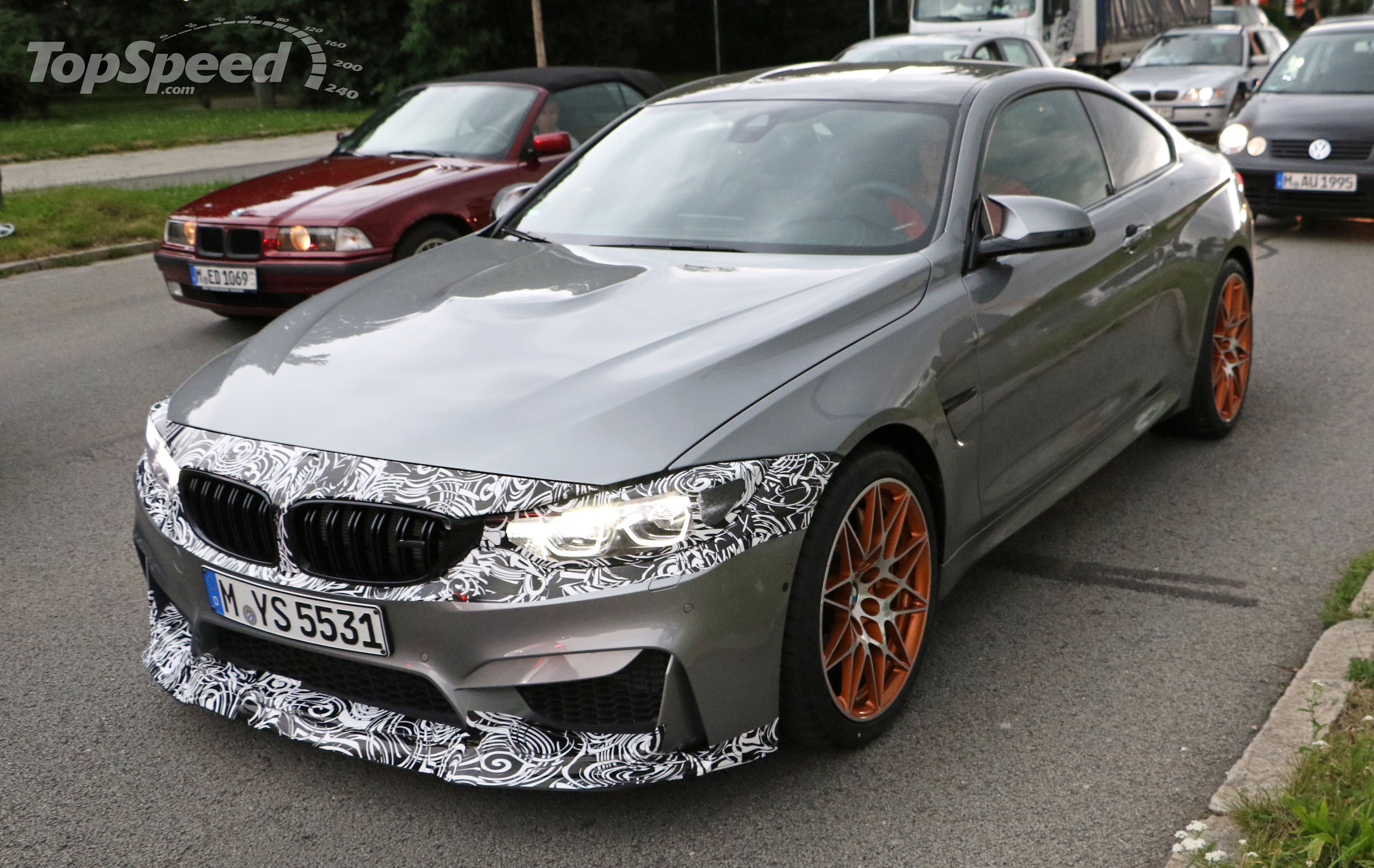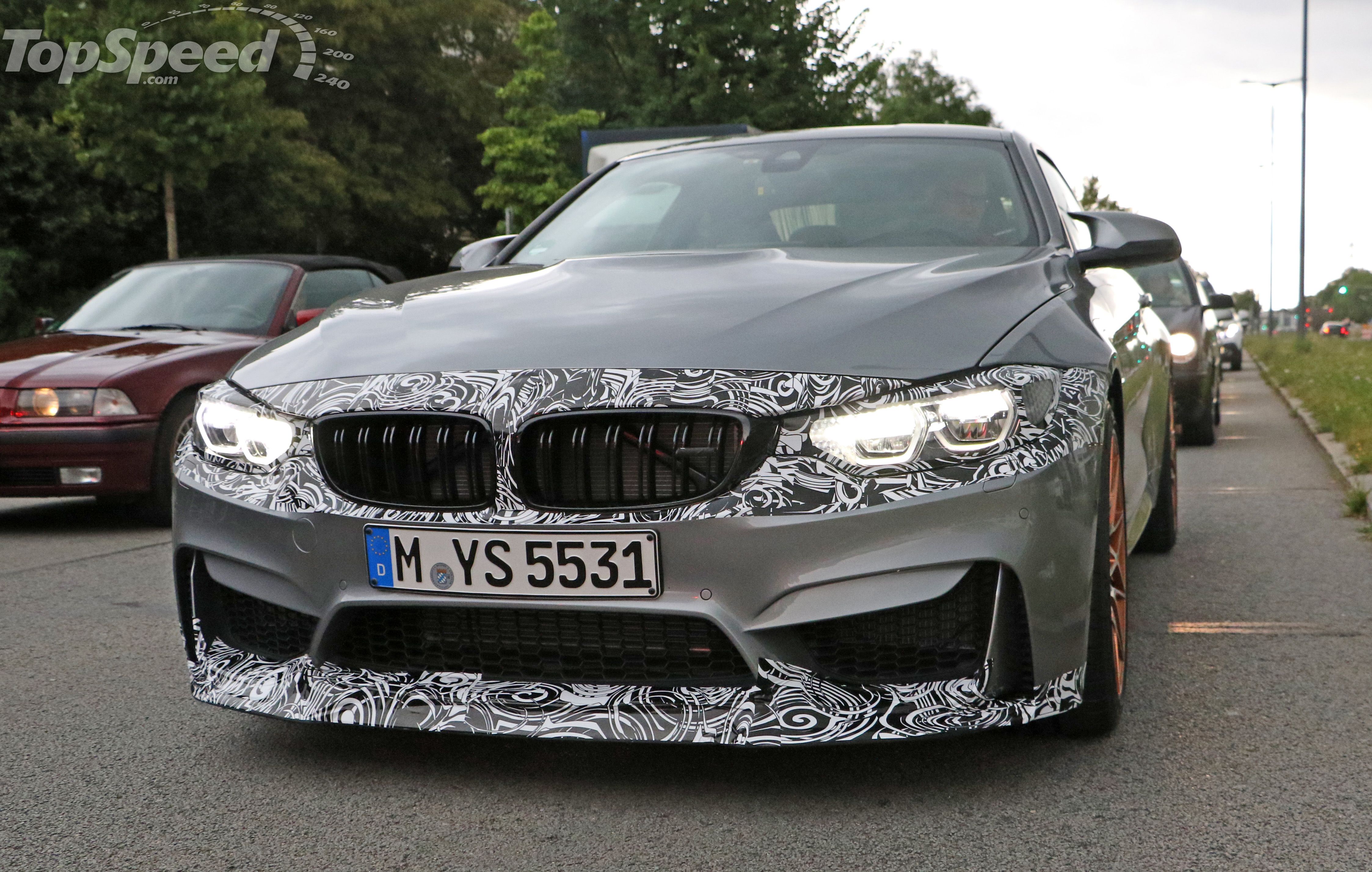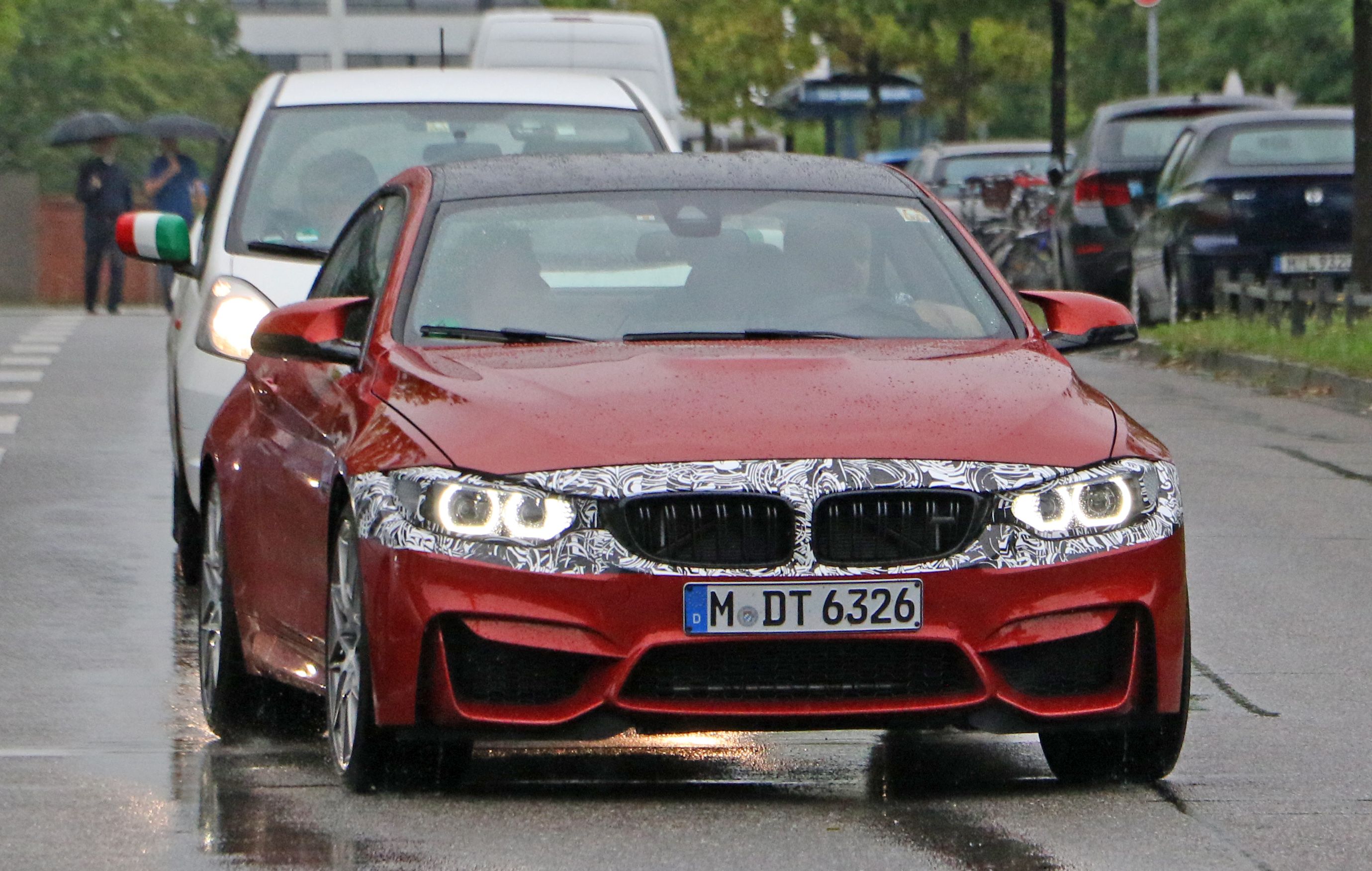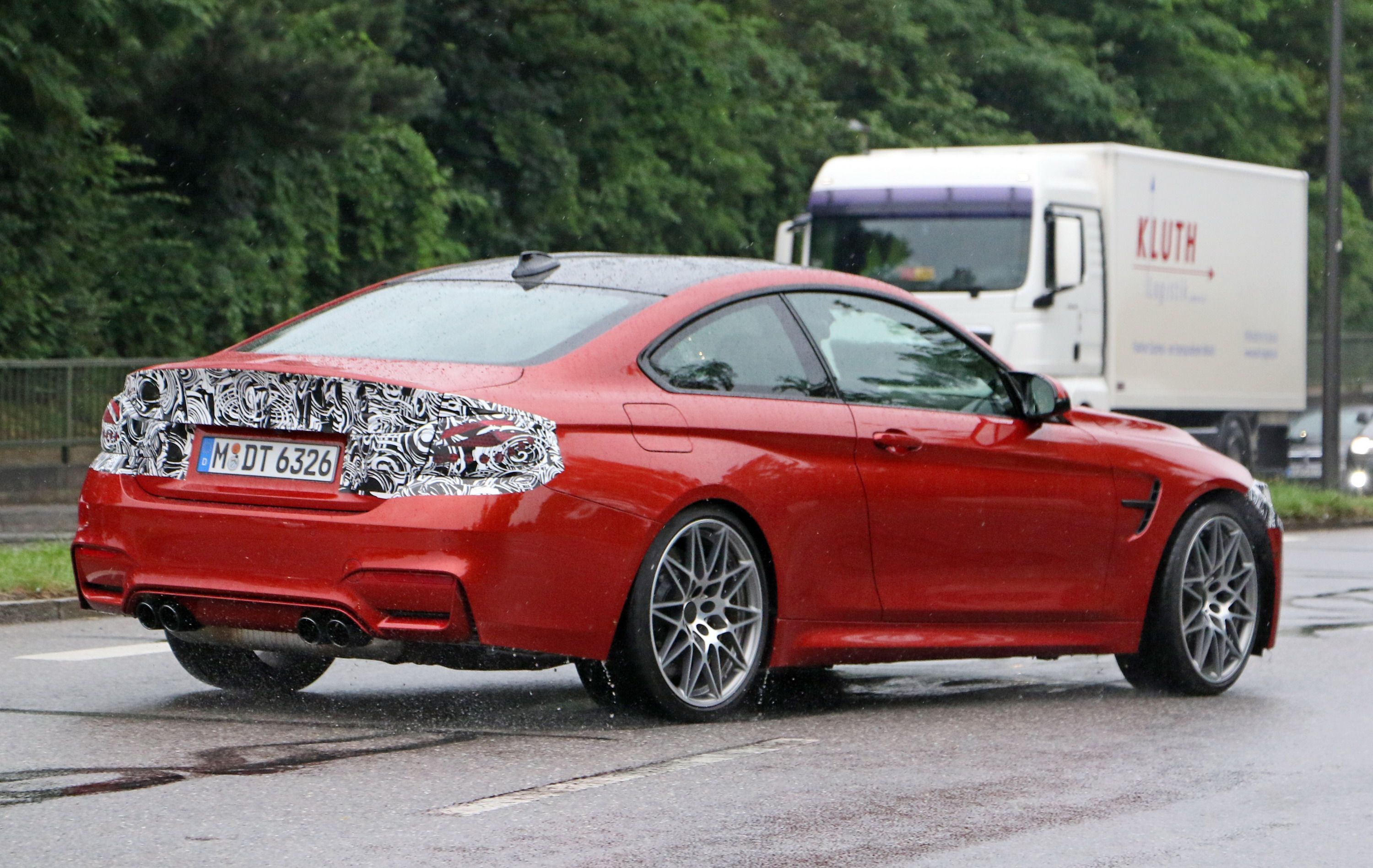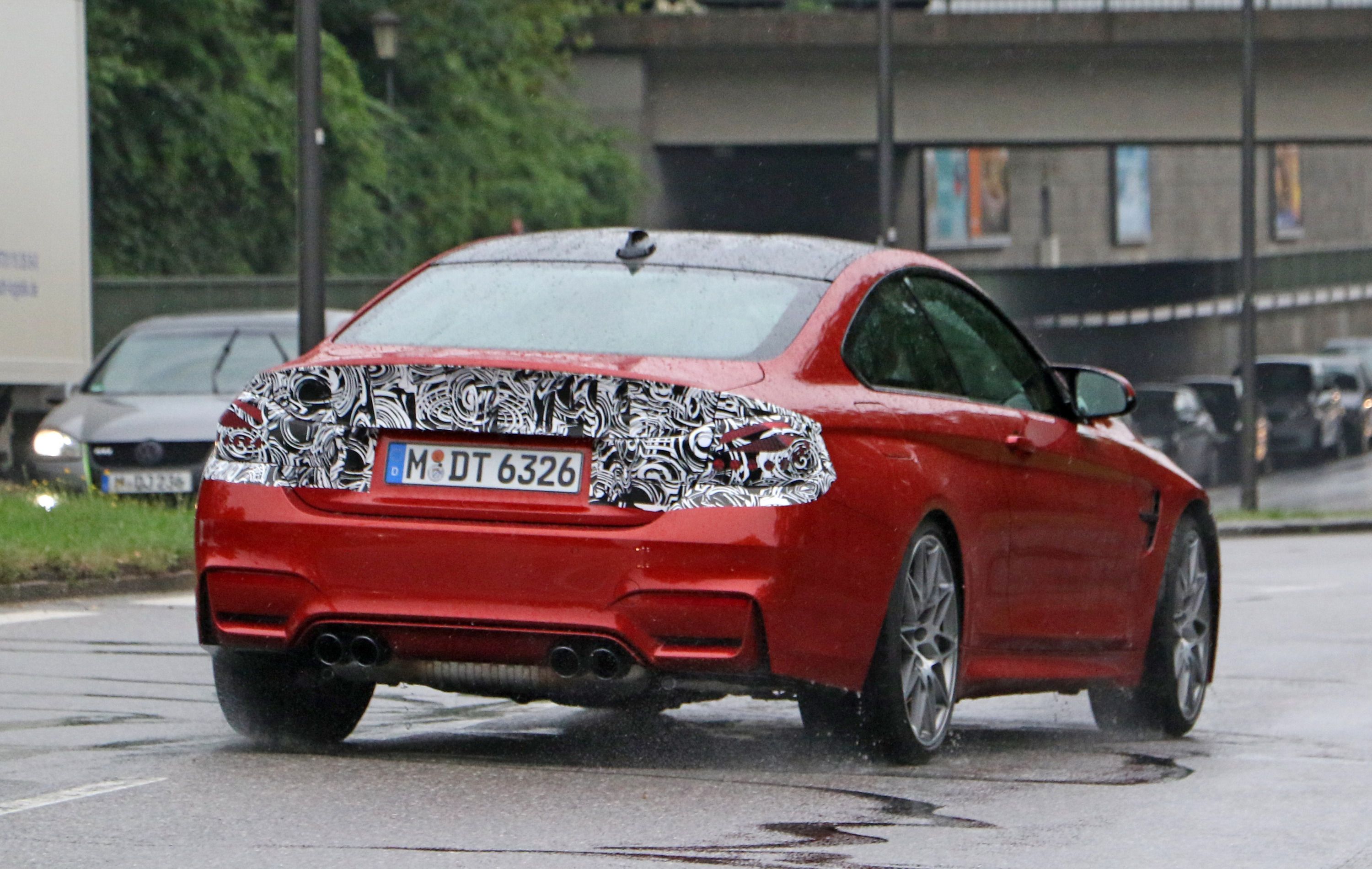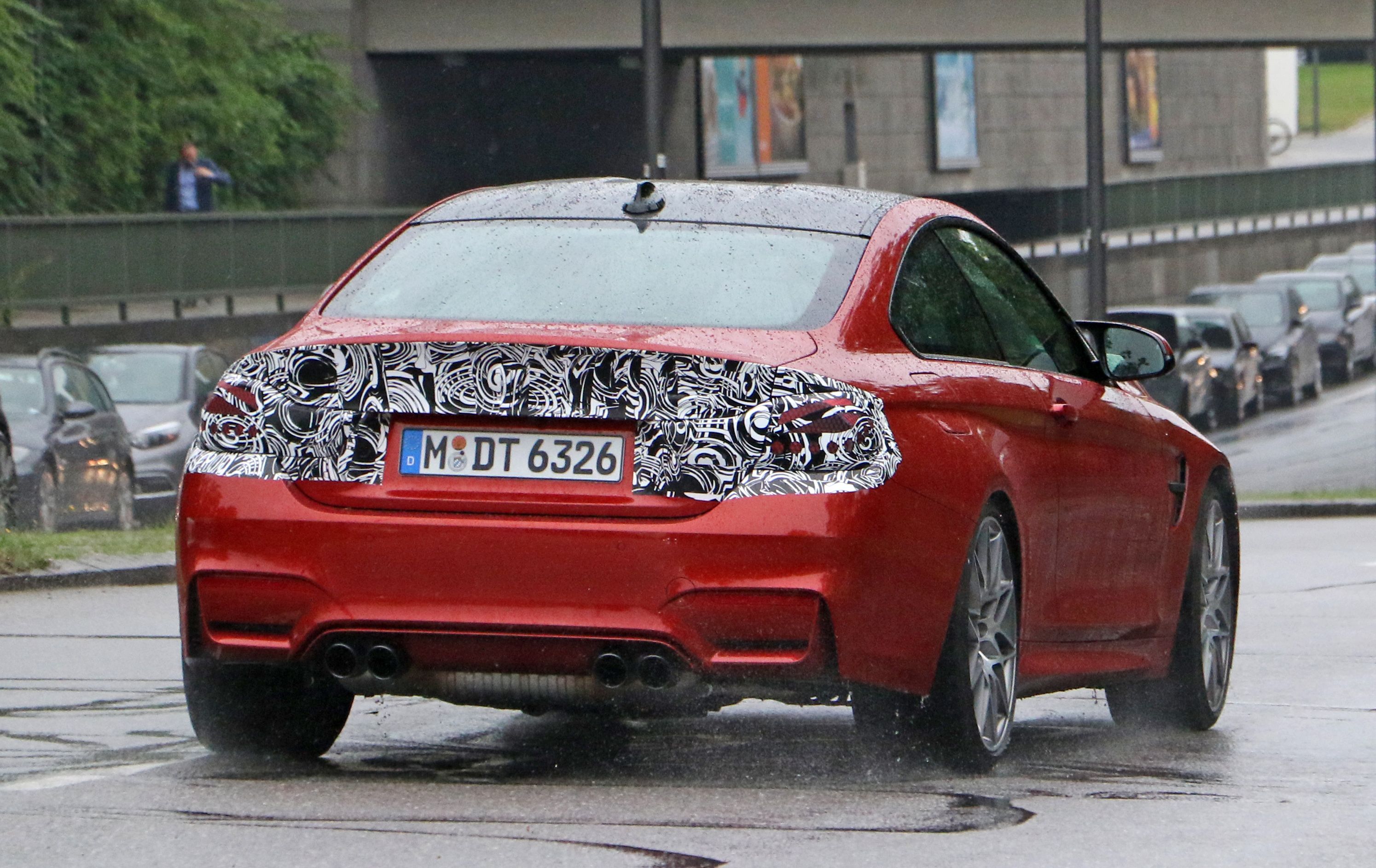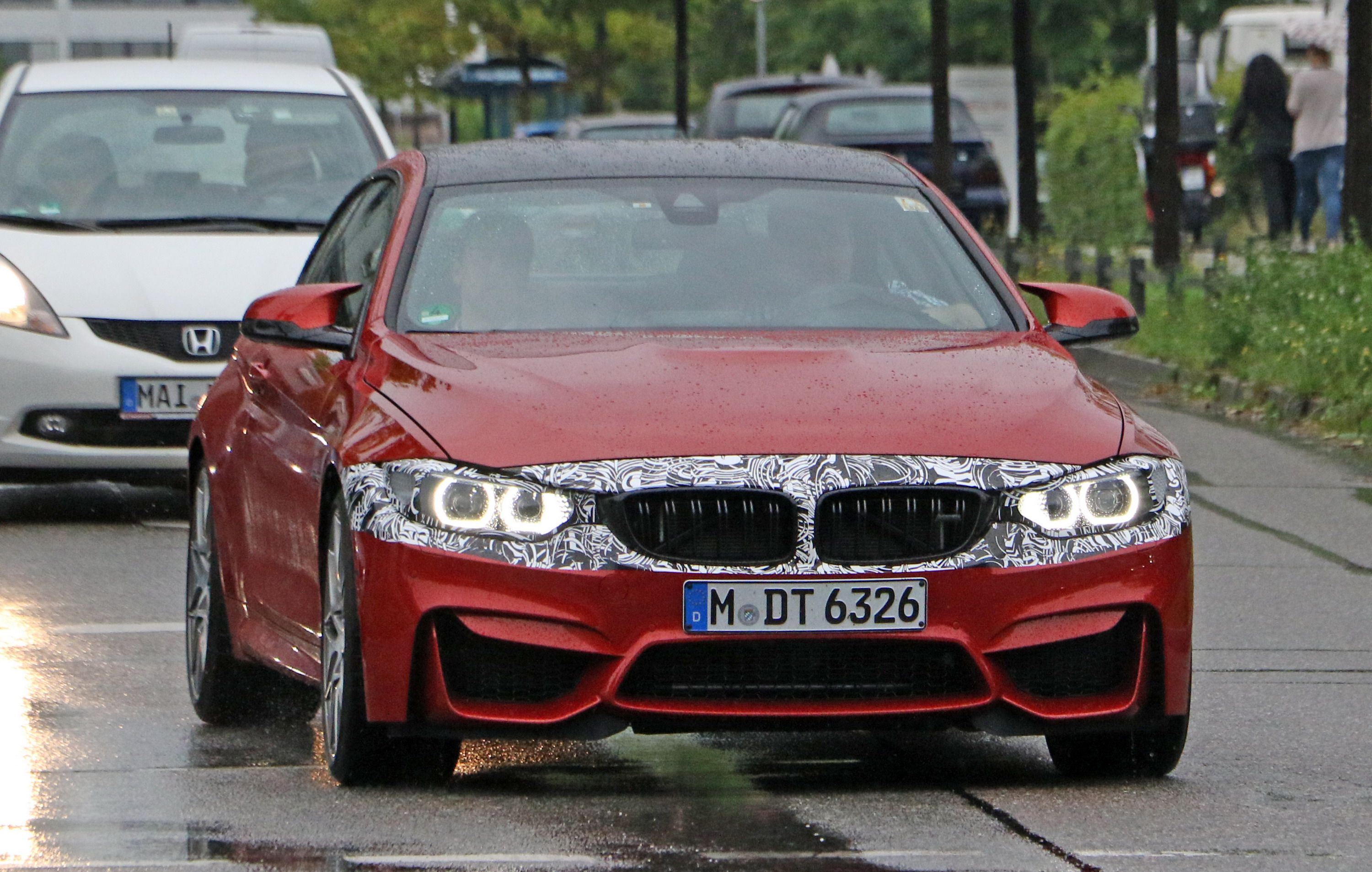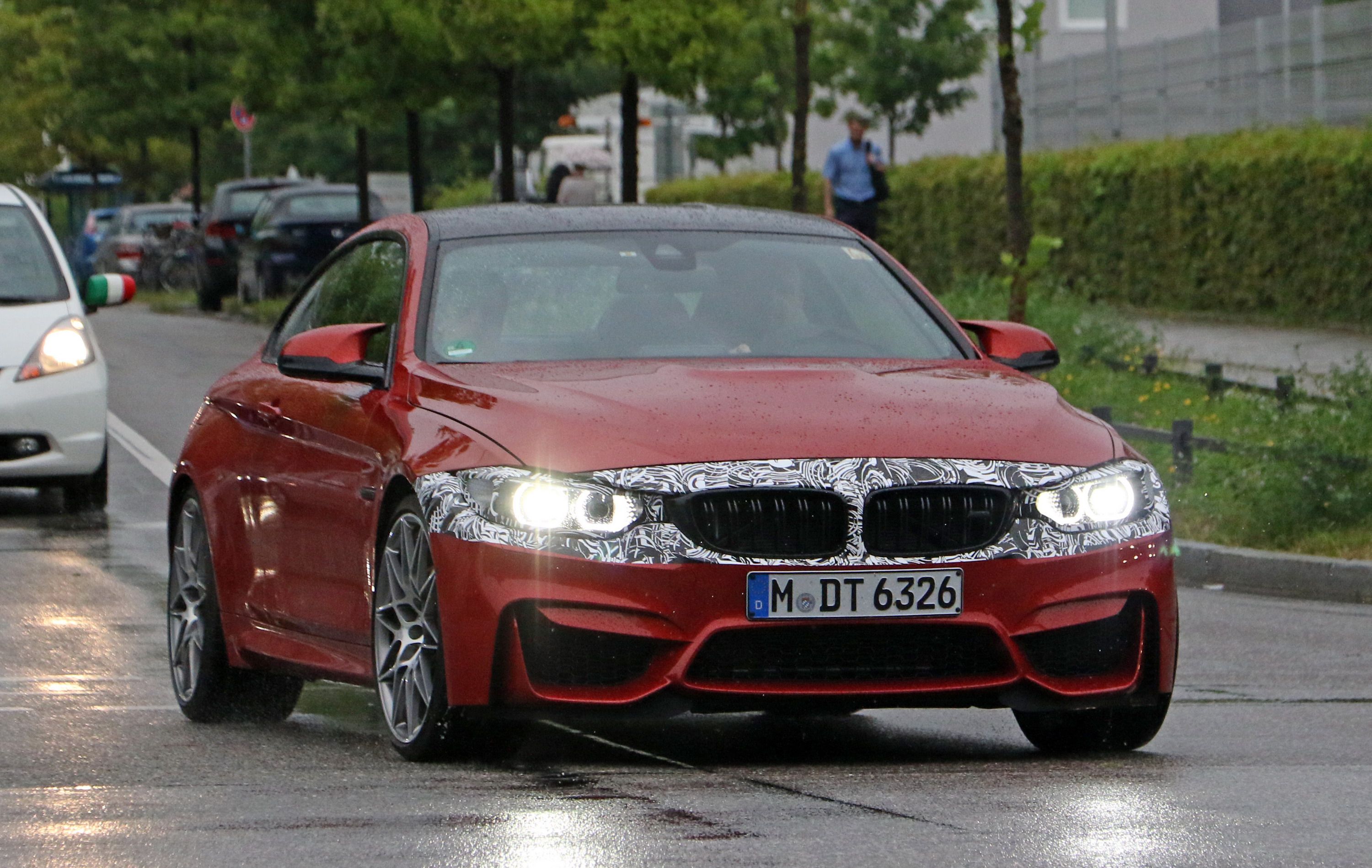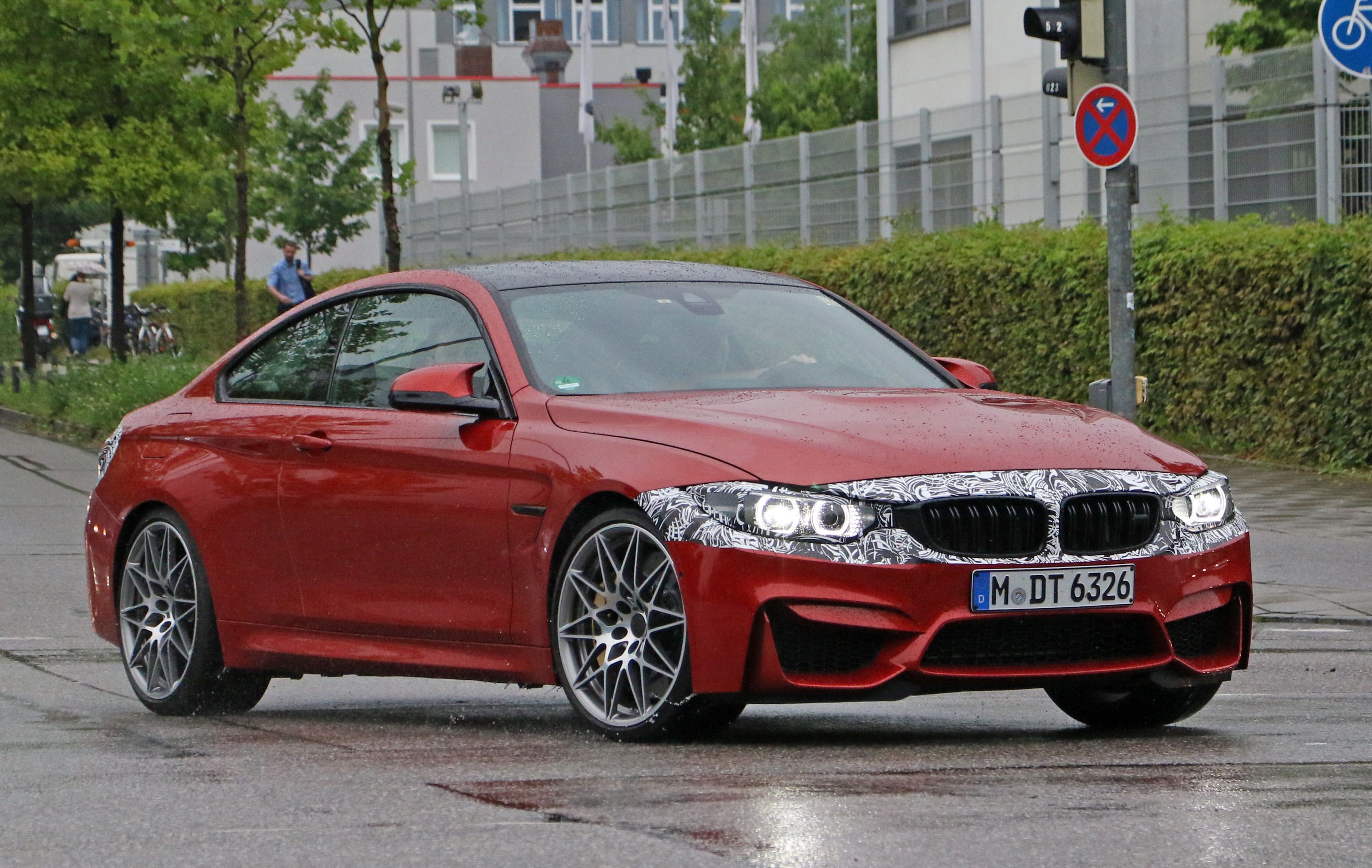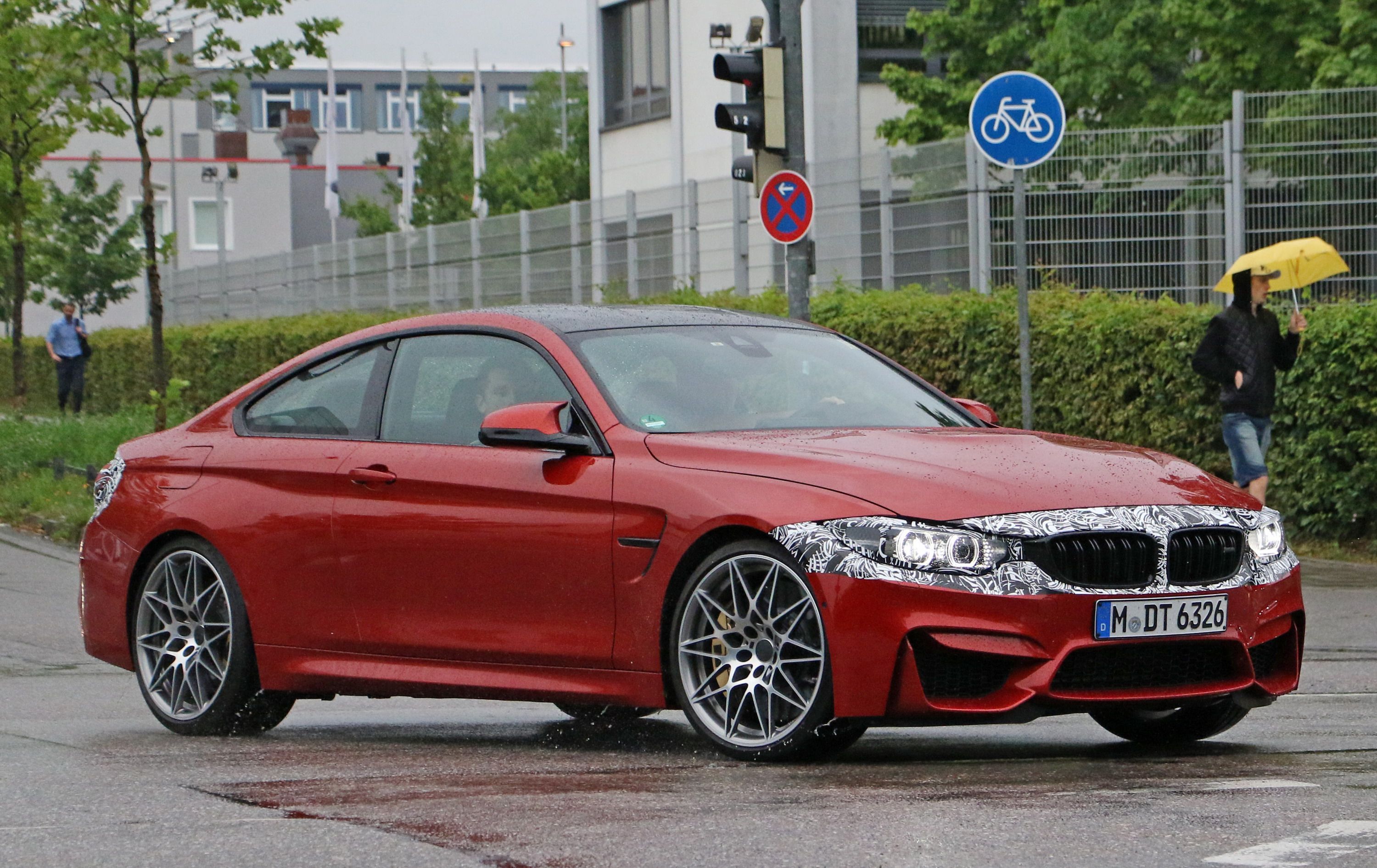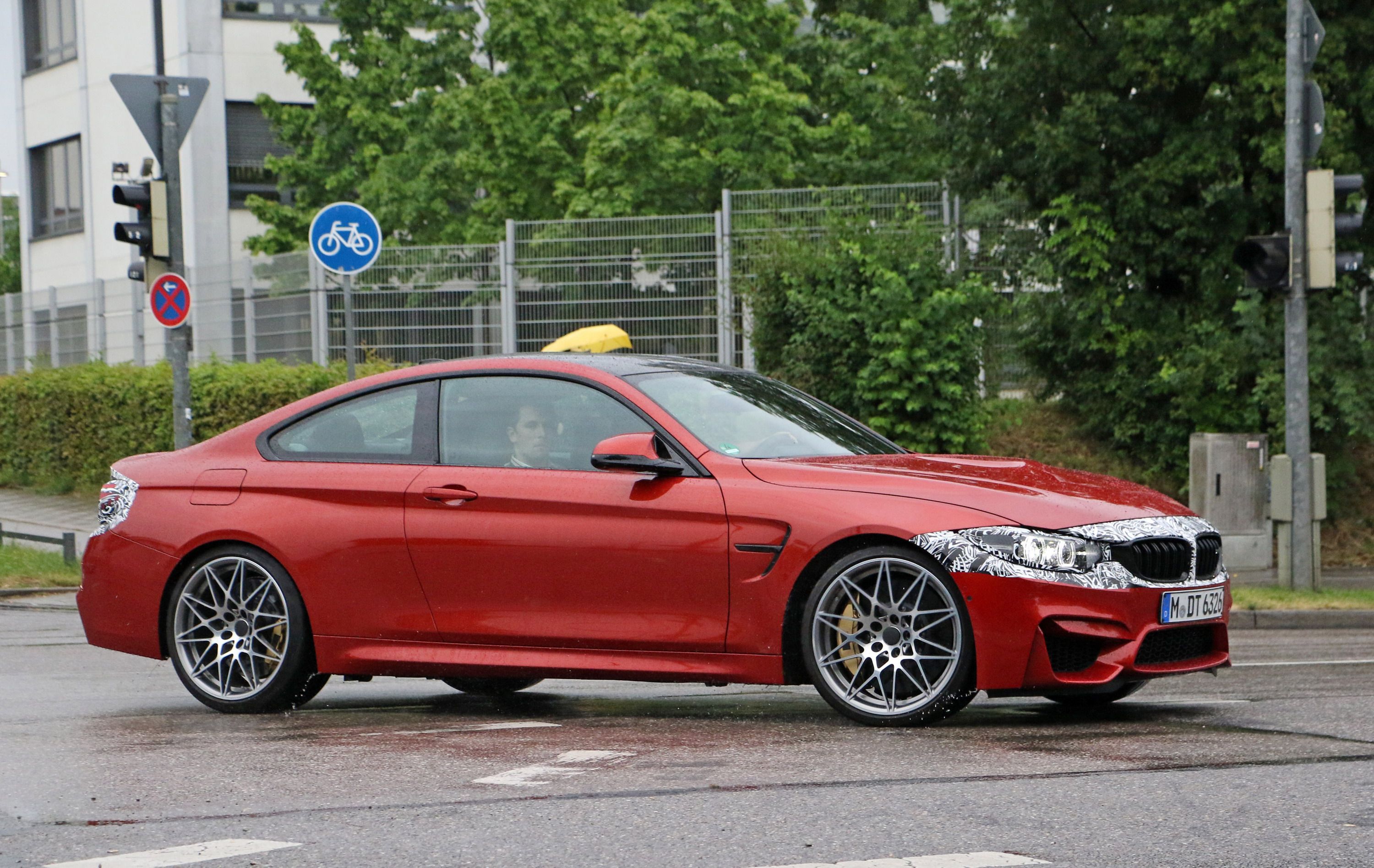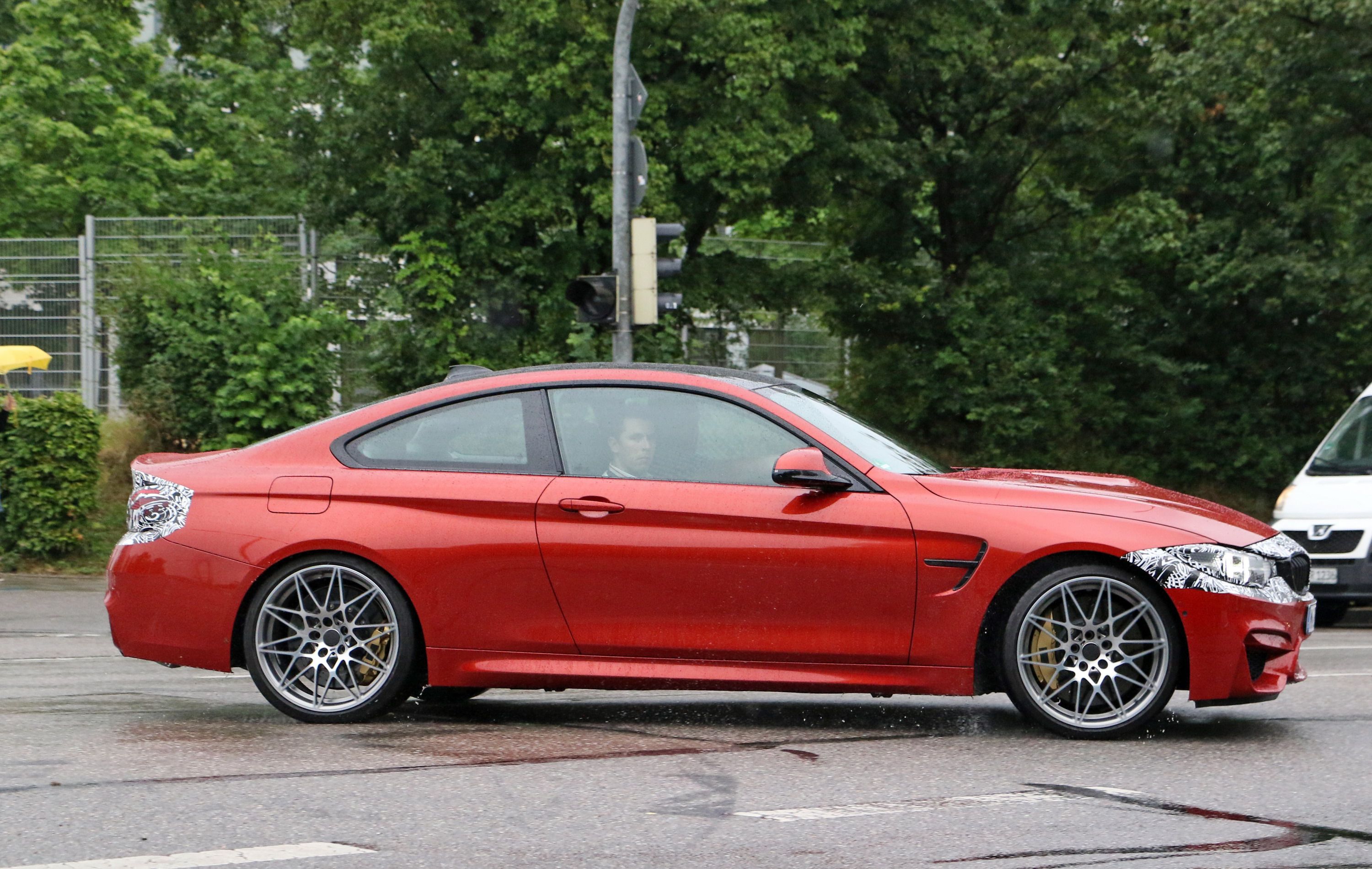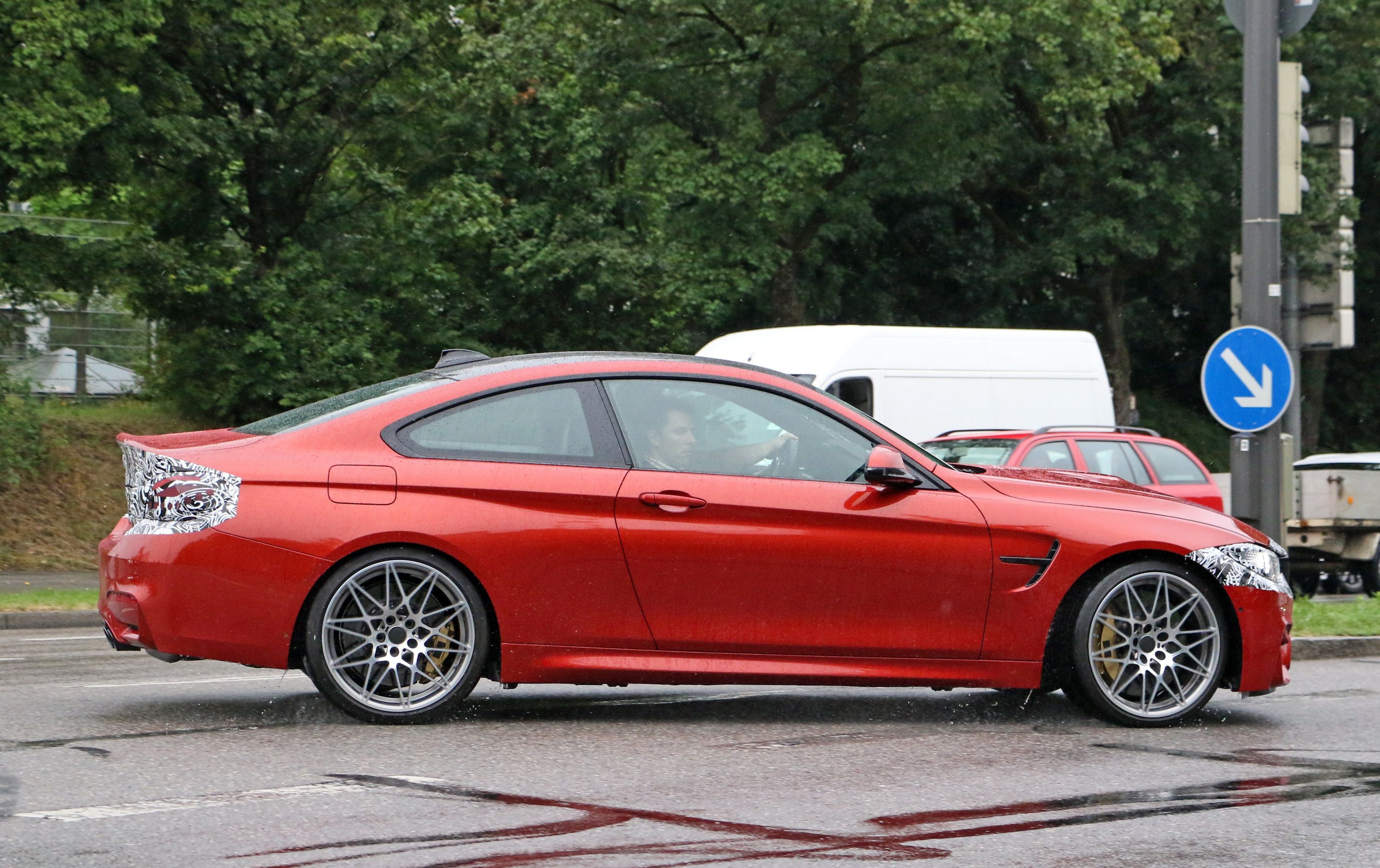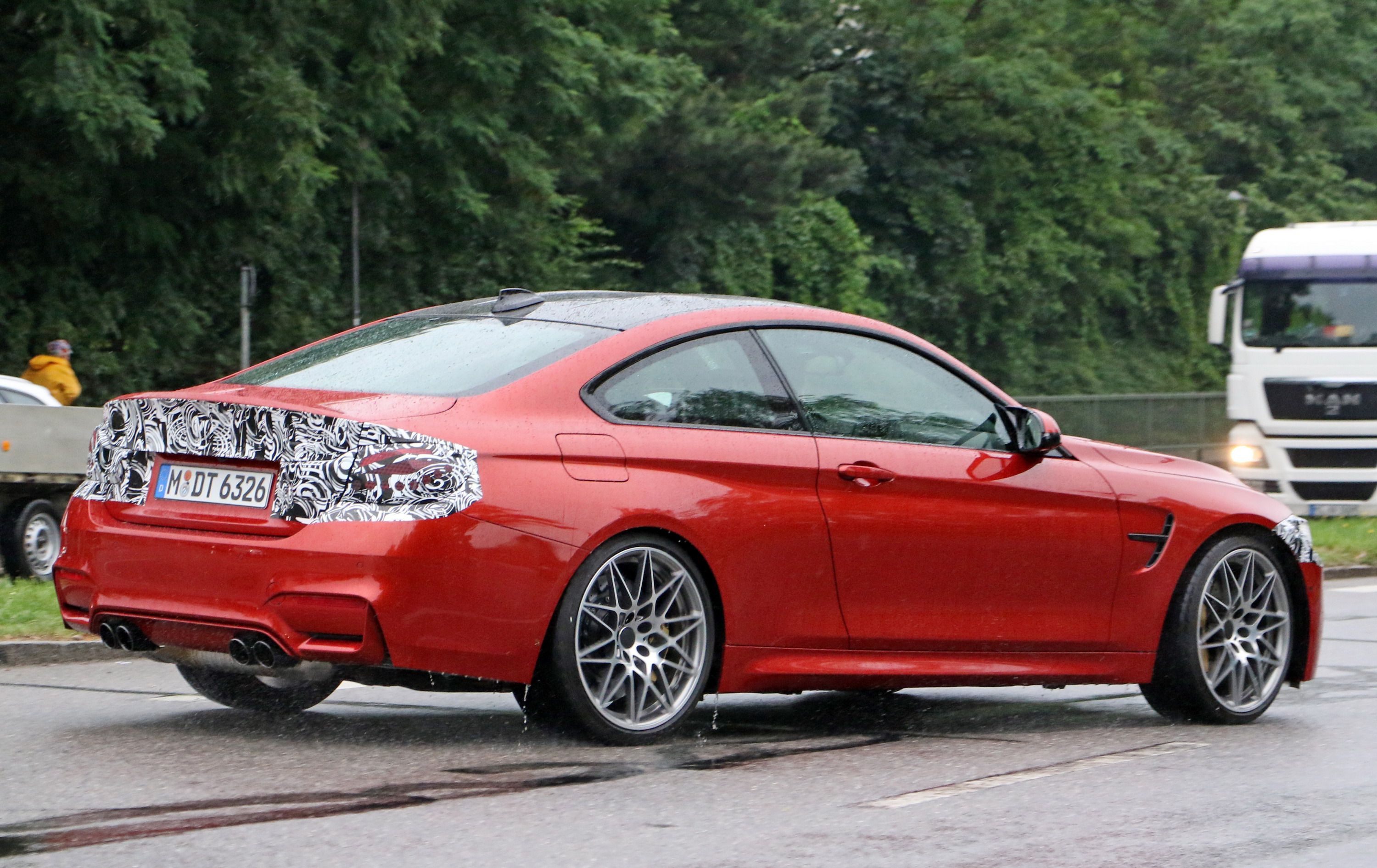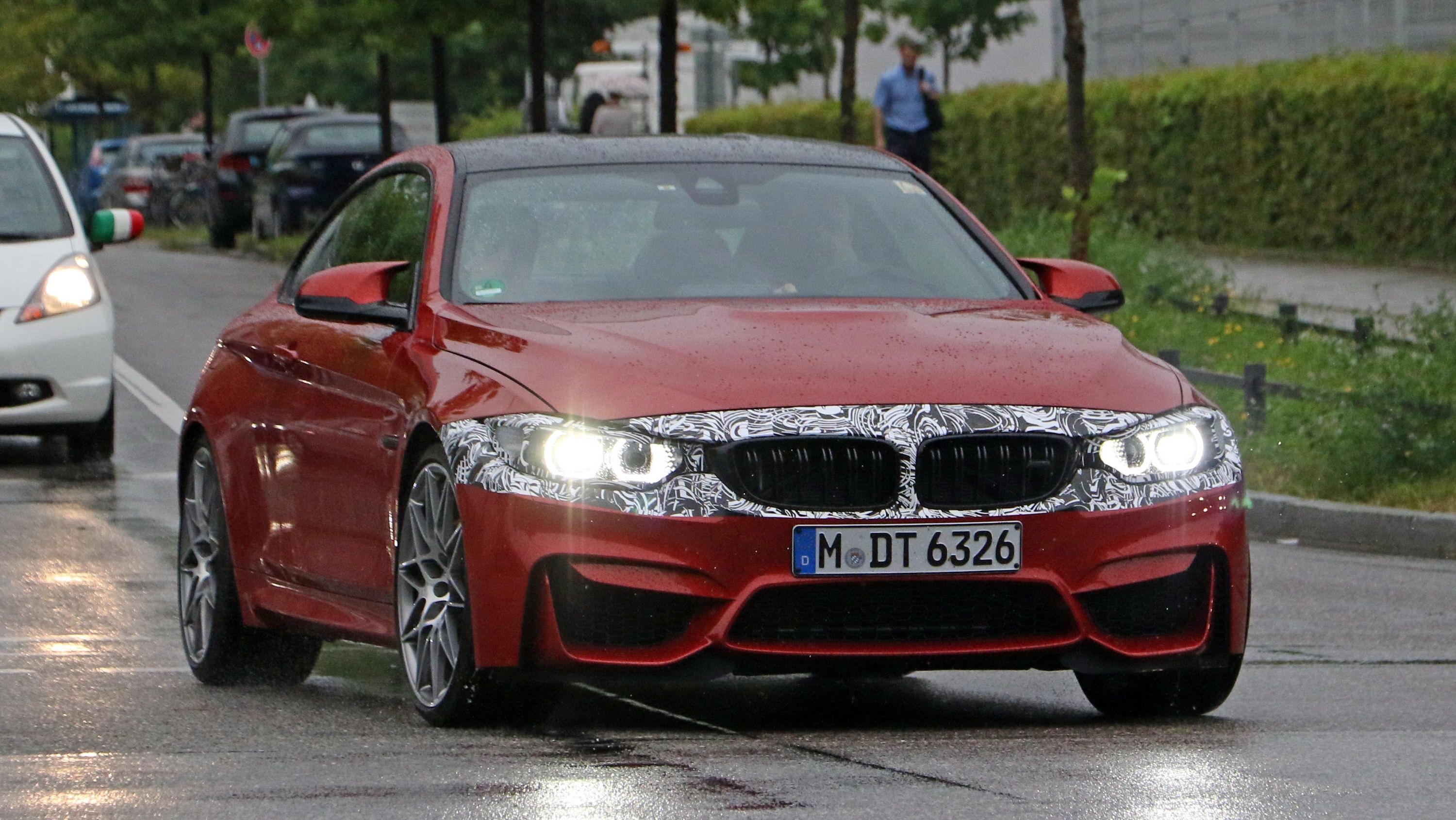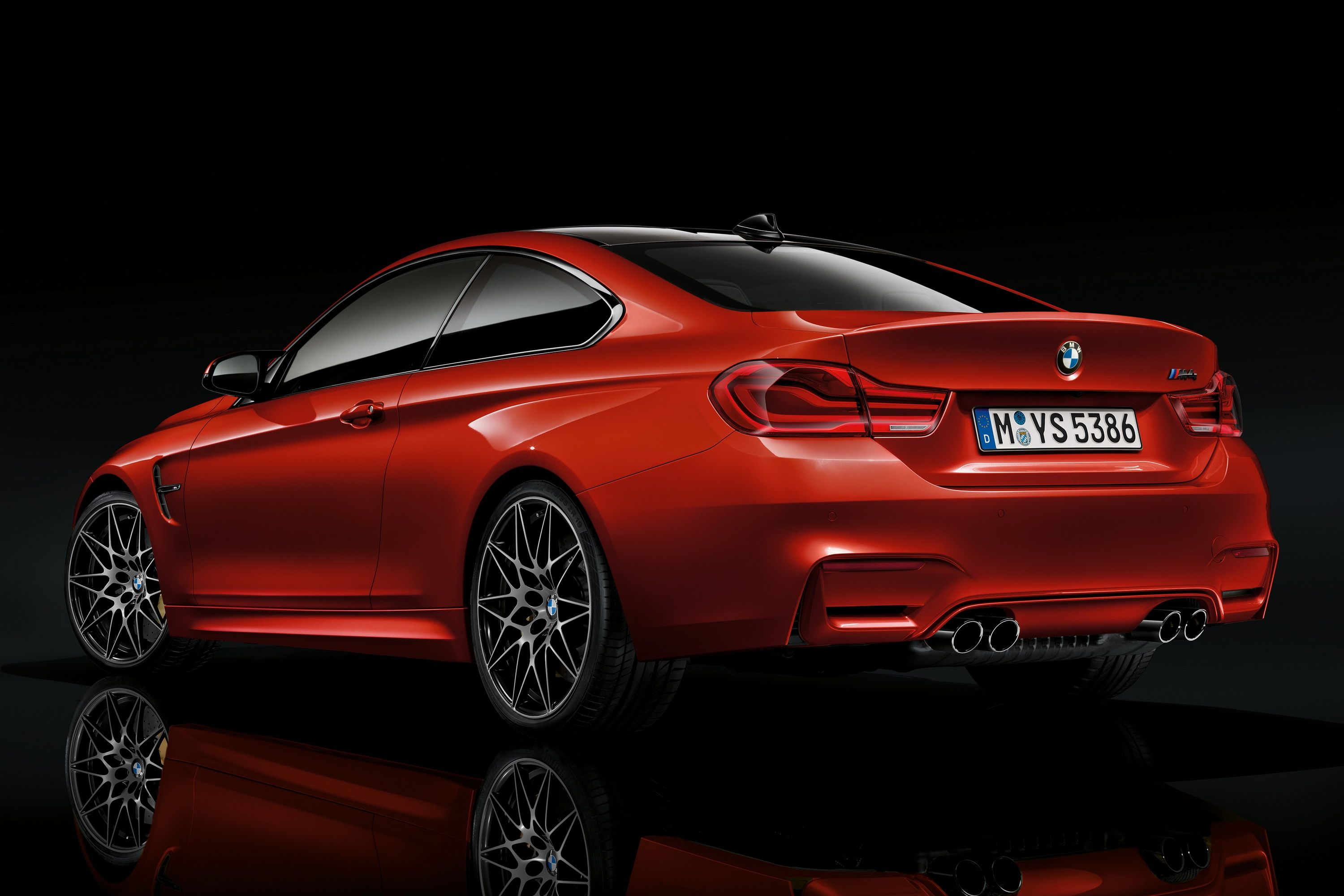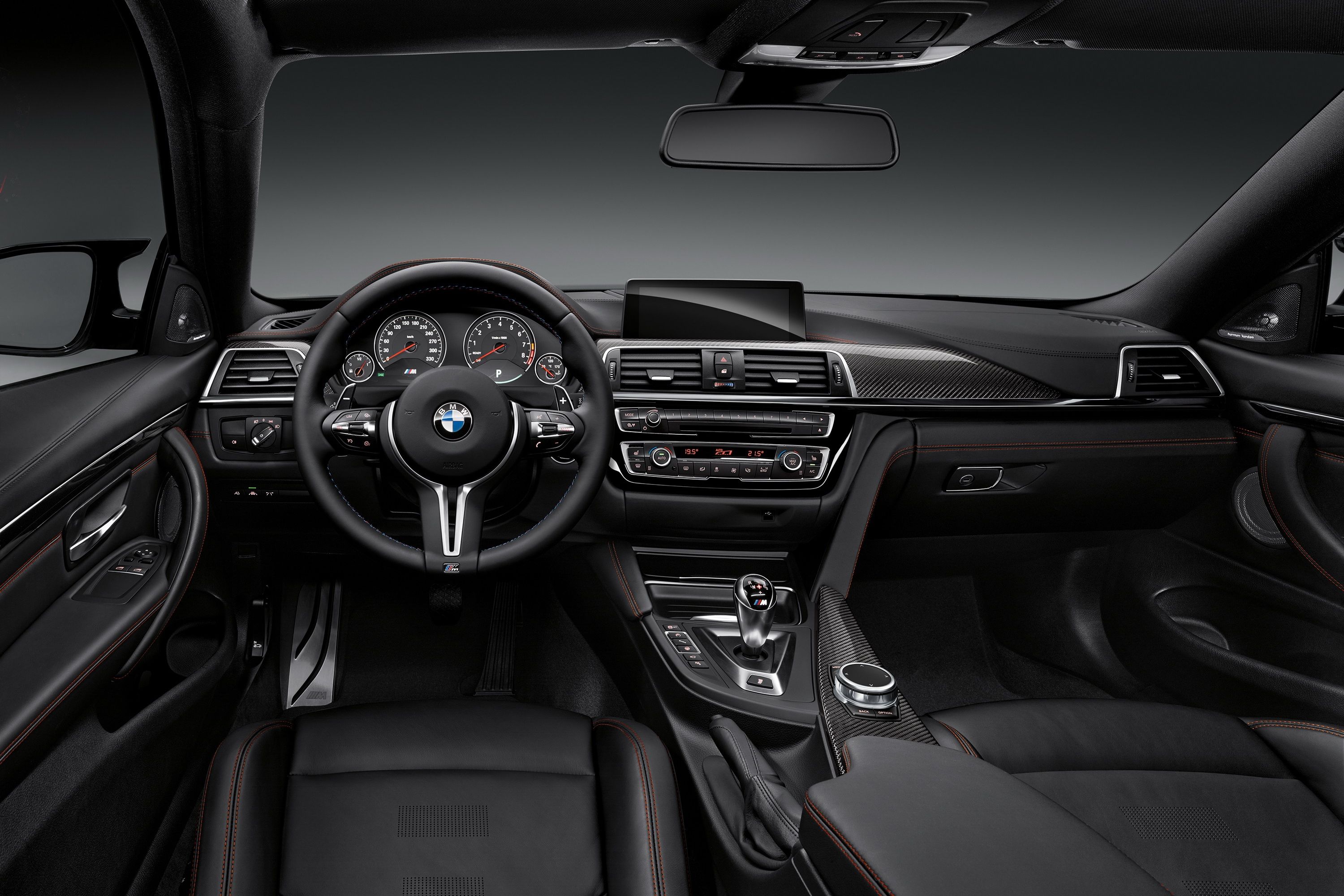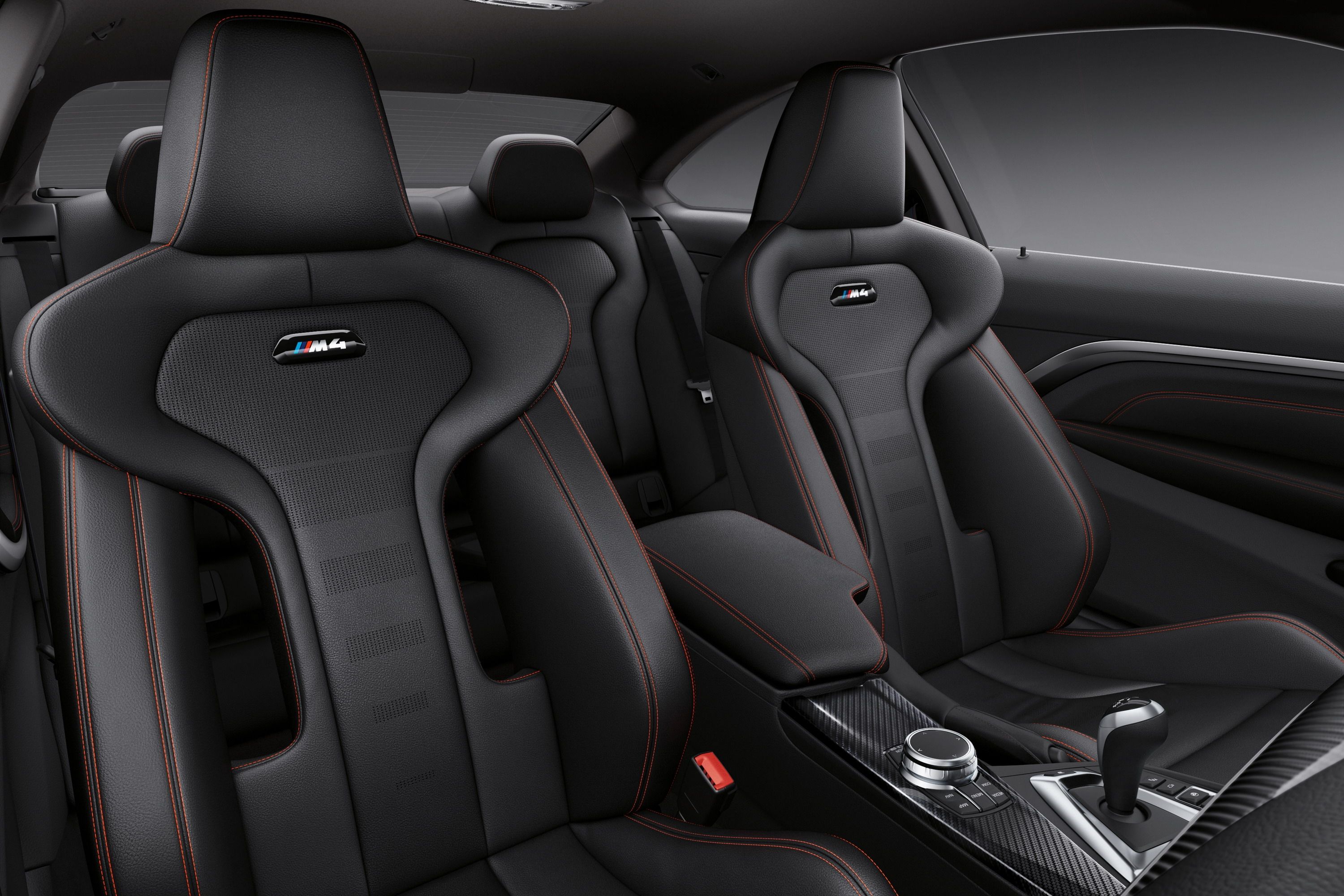In a move of desperation to separate its sedan and coupe models, BMW decided to quit manufacturing two-door models under the 3 Series name, and instead call them the 4 Series. As such, the M3 Coupe became the M4 Coupe from model year 2012 forward. The model carried on practically unchanged for the first few years of its young life, but for the 2017 model year (2018 here in the U.S.,) BMW has brought a number of improvements to the M4 that includes LED headlights, 3D LED Taillights, and an updated navigation system as standard equipment. There is a mild power upgraded afforded as part of the facelift that increases output to 431 horsepower, a seven-horsepower increase, to go with a combined fuel economy rating of 32.1 mpg.
Of course, BMW didn’t see fit to do much in terms of visual updates, so don’t expect anything else on the outside to change outside of what I’ve already mentioned. The facelifted M4 carries on with the same front and rear fascias, as well as every single body line that emphasizes the car’s sporty character and dominant power delivery. But, that’s not necessarily a bad thing as the M4 was pretty damn attractive to begin with, so the few changes that come as part of this facelift should keep the model fresh through the turn of the decade when BMW will usher in the second-gen model.
Until then, however, let’s take a look at the updated model, talk a little more about it, and the competition that it’s forced to go head-to-head with in a demanding market.
Continue reading to learn more about the revised BMW M4.
2018 BMW M4
- Make: Array
- Model: 2018 BMW M4
- [do not use] Vehicle Model: Array
Exterior
For those of you who are critical of manufacturer updates, you’ll find that BMW was obnoxiously lazy when it came to updating the exterior of the M4 Coupe and M4 Convertible. The same front and rear fascias, muscular hood, and powerful side profile carry over unchanged. LED headlamps still come as standard equipment while new headlights with hexagonal LED strips can be had as an option. The kidney grilles carry over unchanged, still featuring the black, vertical louvers while the air damn and corner air vents get the same recessed mesh. Around back, the changes are just as minuscule with the only real difference being the new layout of the taillights, which are also LED in nature and come standard on the M4 Coupe and Convertible.
If you option for the Competition Package that has been available for the M4 since early 2016, you’ll get a number of exterior trim elements in black that include the front grille surround, window trim, fender vent logo, and the rear M4 logo. The centrally mounted, dual-exhaust outlets also get the black treatment. To go along with the black exterior enhancements, the competition package can also be optioned with a new set of 20-inch light-alloy wheels in Star-spoke 666 M styling that are finished in black – not a bad way to round out the exterior package.
M Performance accessories are also available and include an exterior carbon fiber package that brings carbon styling to exterior trim components as well as the rear diffuser and spoiler. The carbon mirror package adds on carbon fiber mirror housings. As I said, even with the optional goodies, the facelift really doesn’t bring too much, but it should help keep things fresh until the next-gen model finds its way into showrooms.
The Competition
If you’re a fan of German cars, then you know that one of the main competitors for the M4 is the Mercedes-AMG C63 Coupe (shown above.) The current C-Class has been around since the 2015 model year, and the C63 of this generation graced showrooms for the 2016 model year. A facelifted model of the standard C-Class is expected for 2018, while the C63 Coupe should see a facelift for 2019. Until then, the model you see here is your weapon of choice from Mercedes, and it packs its own stylish punch. Where the BMW features a more aggressive front end with sharply defined lines and extra bits here and there for more masculinity, the C63 takes more of a smoother elegant approach. It features the traditional Mercedes-AMG, double-louver grille to go with wide corner air intakes that are linked together via a small void in the fascia and surrounded by chrome trim. A smaller air dam down below helps to create a front splitter that does actually help add a small bit of downforce to the front end. Meanwhile, the side profile features two sharp but opposing body lines that emphasize the rear-positioned cabin and the flared wheel arches. In terms of cabin position, you’ll find that the cabin of the C63 sits a little farther back than that of the M4 which also means a longer hood and more rounded and sloped roof in the rear. And, finally, in the rear, you’ll find that the C63 has a small lip spoiler to go with square dual exhaust outlets that are integrated into rear diffuser – a feature you can’t have on the M4.
Now, usually we would compare the big German 3, but the problem is that Audi hasn’t announced the next-gen RS5 yet, so we know next to nothing about it. So, looking at what is available on the market now will lead you to an unlikely competitor that is more than capable of jumping into the ring and going a full 15 rounds without worry. I’m talking about, of course, the Lexus RC F (shown above.) The RC F is a new vehicle being introduced to the market in 2015 as a high-performance version of the Lexus RC. Up front, you’ll find a big spindle grille with a sharp inward point on each side that matches the sharp points of the small and oddly shaped headlights, and the Nike Swoosh-shaped LED running lights just below. Smaller corner vents that are actually functional round off the aggressive front end and fit in nicely with the central hood vent and muscular hood lines. The side profile is the definition of sharp styling cues with the main body line creating a serious crease extends into the protruding taillights on each corner. Down below the wheel arches feed into a wider side skirt that looks sporty and has been said to be functional as far as providing some central downforce. Around back, the RC F is all about muscle and unique looks with wild body lines, uniquely shaped taillights, and a large diffuser with a pair of staggered exhaust outlets in each corner. Like the M4, the rear decklid swoops upward to create a built-in spoiler lip of sorts. If you’re looking to stand out in the crowd, the RC F is the car for you. It’s certainly a head turner and defines what it means to be a muscular sports coupe.
Exterior Dimensions
|
Mercedes-AMG C63 |
Lexus RC F |
BMW M4 |
|
|
Wheelbase (Inches) |
111.8 |
107.5 |
110.7 |
|
Overall length (Inches) |
187.0 |
185.2 |
184.5 |
|
Overall height (Inches) |
55.1 |
54.7 |
54.4 |
|
Overall width (Inches) |
73.6 |
72.6 |
73.6 |
|
Track front/rear (Inches) |
64.4/62.7 |
61.2/61.4 |
62.2/63.1 |
Interior
Much like the exterior, BMW kept it simple when it came to interior updates as well. In fact, the only noticeable difference in the entire interior design are the newly-designed and illuminated M4 logos on the seatbacks. It’s a nice touch and all, but far from revolutionary. Interior trim pieces like those along the nose of the dash, around the HVAC vents, and on the center stack come in either chrome or are electroplated for a black-ish appearance. The latter can be found on the long trim strip that traverses the full width of the dash and on the door panels, to go with the trim element that surrounds the cd changer and HVAC controls. Chrome trim can be found on the steering wheel and around the HVAC vents.
|
|
right> |
You’ll also find that the dash now gets the same contrasting double stitching that the rest of the interior upholstery has. But, more important than that is the upgrade to the infotainment system that brings about the updated OS, which is also found in the new 5 Series and includes a multi-tile layout that’s easy to use. The Professional navigation system comes standard and is capable of providing a normal birds-eye view of your route or a more in-depth 3d view that accurately displays buildings and other structures in the surrounding area with near-perfect accuracy. Other standard features include BMW’s ConncetedDrive services to go with advanced Bluetooth phone connectivity, inductive charging, and a Wi-Fi hotspot.
On the options front, you can opt for the Carbon Interior Pack that includes a healthy dose of Alcantara wrapped around the steering wheel to go with carbon fiber inlays throughout the cabin. As part of this package, the transmission gear selector and its surround also come with a carbon fiber finish to tie up all of the loose ends in the styling department. And, considering the car itself didn’t change aside from these minor updates, the passenger space inside carries over unchanged as well. That means you’ll find 42.2 inches of legroom up front and 33.7 inches in the rear to go with 55.3 inches of shoulder room up front and 51.7 inches in the rear. Headroom for the coupe is rated at 39.8, but if you opt for the convertible, you can enjoy unlimited headroom with the top down.
The Competition
When it comes to interior design, it really boils down to a matter of taste, and you’ll find that the C63 Coupe (shown above) has a compelling look and stands out even against that of the M4. To start off, you get the same design language that is used inside the Mercedes-AMG GT series. This means you get a high-sitting center console, low-sitting and sporty seats, a flat-bottom steering wheel, and plenty of soft-touch surfaces. Most of the interior is wrapped in leather, with the primary color being dark and a lighter contrasting color being used to add a little more character to the face of the dash, door trim panels, and the center of the seats. The seats are perforated and offer heating and cooling functions, while dark-colored leather gets contrast stitching to further accentuate the car's elite personality. A large helping of carbon fiber can be found on the face of the center console and center stack where you’ll find the HVAC controls and audio system controls.
The current model of the C63 this has that weird mouse-like infotainment control on the center console, but once the mid-cycle update takes place, you’ll find that it has been replaced by a touch pad controller that is innovative and easier to use. Finally, you’ll find that the infotainment system is represented by a large display that floats atop the center stack. This screen is used to display important vehicle information, navigation, the audio system itself. You’ll find that standard features include a Burmester surround sound system, Bluetooth phone connectivity with audio streaming, HD Radio reception, and SiriusXM radio with a six-month trial. Optional features include the COMAND hard-drive-based navigation with an 8.4-inch display, three years of map updates, TuneIn world radio, AMG head-up display, voice control, and a Wi-Fi hotspot, among others.
Maybe you’re still not sold on that Lexus RC F, but once you look inside, you might find it a little more enticing. To start off the layout of the dash and center console has more of an old school exotic look with lots of defining lines that create a truly unique design in this segment. The dash is what I like to call multi-layered in which it is flat on top, but has a steep dropoff that allows for a second level where the infotainment display is recessed a bit. Unfortunately, this makes viewing the bottom of the screen difficult for those who are shorter in nature but isn’t a problem for most people. Below the display is a pair of HVAC vents with an analog clock in the middle and, just below that, sits a large panel with various audio controls as well as the loading slot for the CD changer. The center console has raised edges that you would think hampers access to the controls at the front of the console but doesn’t, and the shifter knob sits pretty far forward as well. A touch pad controller is in place to help control the infotainment screen (a feature it took Mercedes two years to come up with.)
The instrument cluster is gorgeous and “race-ready.” A small analog gauge sits in the lower right corner while a digital tach sits right in the middle. Inside the tach is a digital speed readout and digital gear readout. The left side of the instrument cluster features a number of digital readouts and is very futuristic looking compared to the standard offerings from BWM and Mercedes. The seats found in the RC F are also sporty in nature and are comparable to those found in the M4 and far sportier than those in the Mercedes. Standard features include Lexus Enform Service Connect, Siri Eyes Free, Drive Mode Select with Sport S+ mode, Lexus Enform Remote (smartphone control of the vehicle,) HD Radio, Subscription-free traffic and weather, Homelink universal remote, and a Lexus 10-speaker audio system. Optional features include Advanced voice command with Bluetooth connectivity, Navigation with color display, Fuel guide, sports and stocks, Mark Levinson Premium surround sound system with 17 speakers, and the Lexus Enform app suite that allows music streaming, voice recognition and a few other options via the central display.
Interior Dimensions
|
Mercedes-AMG C63 |
Lexus RC F |
BMW M4 |
|||
|
Mercedes-AMG C63 |
Lexus RC F |
BMW M4 |
38.8/35.6 |
36.5/34.6 |
39.8/36.1 |
|
Headroom front/rear (Inches) |
42.0/32.0 |
45.4/27.3 |
42.2/33.7 |
||
|
Legroom front/rear (Inches) |
54.8/51.7 |
50.7/46.1 |
55.3/51.7 |
||
|
Shoulder room front/rear (Inches) |
10.5 |
10.1 |
11.0 |
||
|
Trunk Volume (cu ft.) |
86.0 |
79.4 |
Drivetrain
When BMW split up the 3 Series into two different models, it also determined that the old naturally aspirated V-8 was also incapable of keeping up with emissions and fuel economy demands. As such, the V-8 was killed off and under the spotlight sits a turbocharged 3.0-liter inline-six that makes use of M TwinPower Turbo technology, to go with Valvetronic and Double VANOS camshaft/valve timing. The new 3.0-liter also developed more power than the ancient V-8 that it replaces, upping the horsepower ante by 11 horsepower and a staggering 111 pound-feet of torque for a total output of 425 ponies and 406 pound-feet. Like the rest of the mid-cycle update for the M4, there isn’t a whole lot of change under the hood, but BMW did manage to massage an extra six ponies, effectively bringing total output up to 431 horsepower between 5,500 and 7,300 rpm and 406 pound-feet between 1,850 and 5,500 rpm.
As such, the same transmissions carry over as well, so you get the choice of a seven-speed, M double-clutch automatic or a six-speed manual. The dual clutch is the way to go for those who want the absolute best in acceleration off the line to go with fast gearshifts, but you’ll clearly find more emotion if you choose to row your own and go with the six-speed manual. According to BMW, the facelifted M4 achieves a combined fuel economy of 32.1 mpg, regardless of what transmission you choose, and pumps out 204 grams of CO2 per km.
The optional dual-clutch transmission comes with BMW’s Drivelogic system that allows you to choose between a manual shifting mode that delivers crisp and quick shifts for more spirited driving or you can leave it in full auto mode and enjoy soft shifts and comfortable ride on the way home from work. The DCT also includes a launch-control feature that limits wheel spin and sets you up for a perfect sprint to 60 mph every time. The carbon fiber driveshaft and M Active Differential carries over to the new model year, as does the stability control system that helps to distribute torque between the rear wheels and M Dynamic Mode that helps you burn a little rubber should you be into the smoking the tires every now and again.
Finally, if 431 ponies just aren’t enough for you and you want a little something more without upgrading to the next model in the lineup, you could opt for the Competition Package that brings in a special ECU tune. It ups the horsepower by an extra 19 ponies to bring total horsepower up to 450. With the Competition package, fuel economy remains the same at 32.1 mpg (31.0 mph in the convertible) while CO2 emissions increases to 204 grams per kilometer in the Coupe or 213 grams per kilometer in the convertible. More importantly, however, it drops your sprint to 62 mph down to 4.0 seconds when equipped with the dual-clutch or 4.2 seconds if you like to row your own. Meanwhile, the convertible makes the same sprint in 4.3 seconds with the DCT or 4.5 seconds with the six-speed manual. As is the usual case with these German masterpieces, top speed is limited to the usual 155 mph.
|
Engine Type |
3.0-Liter I-6 Turbocharged |
|
Engine Technology |
M TwinPower Turbo technology with two mono-scroll turbochargers, High Precision Direct Fuel Injection, fully variable valve timing (VALVETRONIC) and variable camshaft control (Double-VANOS) |
|
Output (HP @ RPM) |
431 @ 5500–7300 |
|
Torque (LB-FT @ RPM) |
406 @ 1,850–5,500 |
|
Transmission |
Six-speed manual gearbox (optional: Seven-speed Double Clutch Transmission) |
|
Acceleration (0-60 MPH) |
4.1 Sec (W/ Manual) / 3.9 Sec. (W/ M-DCT) |
|
Top Speed |
155 mph |
What Motivates the Competition
When it comes to the heart of the beasts, you’ll find that there is a really interesting tradeoff here. The M4 can only be had with that inline-six, which provides great fuel economy figures. Meanwhile, the competition gets eight cylinders of unadulterated, fuel burning goodness that comes at a clear-cut cost in the economy department. But, let’s talk a little bit more about that in detail.
Handcrafted Biturbo Goodness
If you casually stroll onto a Mercedes lot and lift the hood of a C63, you’ll find a handcrafted, German V-8 that displaces 4.0-liters and provides an impressive 469 horsepower as low as 5,500 rpm and 479 pound-feet of tire-chewing torque at as low as 1,750 rpm. With a diecast-alloy block and cylinder heads and a curb weight of 4,074 pounds, this powerhouse is able to push the C63 to 60 mph in 3.9 seconds with top speed generally limited to 155 mph. This extra power and faster sprint over the M4 does come at a cost, however, as the C63 is able to achieve just 17 mph in the city and 23 mpg on the highway – a serious deficiency compared to the M4. Supporting the body is a four-wheel independent suspension system that utilizes a four-link system up front and a five-arm multilink setup in the rear. AMG Sport suspension is standard and is able to adjust the suspension based on road conditions, location, and driving style, among other things, to provide a smooth ride when cruising or a stiff ride during more spirited maneuvers. A three-stage stability control system keeps things from getting too squirrely while helping to keep torque distribution in check when needed. On the steering front, you’ll find an electromechanical system with a rack-and-pinion setup that provides a 37.1-foot turning circle from curb to curb. Various wheel options are available at the time of purchase, but the standard units are 18-inch AMG five-spoke wheels that measure 9.0x18 in the front and 10.5x18 in the rear. The fronts are wrapped in 255/40-series high-performance rubbers while the rears get 285/35-series shoes to accommodate the wider wheels.
Naturally Aspirated Power
If you’re willing to consider Lexus’ performance coupe, you’ll find you can have 467 horsepower and 389 pound-feet of torque from a 5.0-liter V-8. While fuel economy numbers come in at 16 mpg in the city, 25 mpg on the highway, and 19 mpg combined. It’s not quite as fast to 60 mph as the M4 or C63, pulling the same sprint in 4.4 seconds, but it tops out much higher at an electronically-limited 170 mph. The big thing here is, however, this is the one sports coupe that you can get without any type of forced induction – something that means you can still enjoy growl and soul that comes along with a naturally aspirated engine, something that neither BMW or Mercedes can give you at the current time. As far as suspension goes, you’ll get an independent double-wishbone setup in the front and an independent multi-link system out back. Braking duties are handled by a Brembo system with six-piston calipers and 14.0-inch slotted and ventilated discs up front to go with four-piston calipers and 13.5-inch slotted and ventilated discs in the rear. Standard wheel options include a set of 19-inch, seven-spoke rollers that are wrapped in 255/35-series rubbers in the front and 275/35-series tires in the rear. A pair of 10-spoke or 20-spoke units are available as an option. Steering is handled by an electronic steering system that gives the RC F a turning circle of 35.4 feet from curb to curb.
|
Mercedes-AMG C63 |
Lexus RC F |
BMW M4 |
|||
|
Mercedes-AMG C63 |
Lexus RC F |
BMW M4 |
4.0-liter V8 biturbo |
5.0-liter V-8 |
3.0-liter Twin-turbocharged inline-6 |
|
Engine |
469 HP @ 5,500- 6250 RPM |
467 HP @ 7,100 RPM |
431 HP @ 5,500-7,300 RPM |
||
|
Horsepower |
479 LB-FT @ 1,750-4,500 RPM |
389 LB-FT @ 4,800 – 5,600 RPM |
406 LB-FT @ 1,850-5,500 RPM |
||
|
Transmission |
7-speed AMG SPEEDSHIFT MCT |
8-speed Sport Direct Shift automatic |
6-speed manual |
||
|
Torque |
3.9 seconds |
4.4 seconds |
4.1 seconds |
||
|
Transmission |
180 mph |
170 mph |
155 mph |
||
|
0 to 60 mph |
4,074 Lbs |
3,958 Lbs |
3,530 Lbs |
||
|
Top Speed |
17/23/19 |
16/25/19 |
17/26/20 |
||
|
Curb weight |
37.1 ft. |
35.4 ft. |
40.0 |
Prices
The facelifted M4 went on sale over in Europe on January 19, 2017, with a starting price of £57,817 – an increase of just £752. That computes to $72,178 at current exchange rates. Here in the U.S., we won’t get the glory of purchasing the facelifted model until later in the year when 2018 models roll into the showrooms, but considering the small pricing increase over in Europe, the U.S. model should start out around $67,000 (up $800 over the previous year) while the convertible could start out around $75,700, representing a $1,000 price increase. When you take into account the upgraded infotainment system, the mild boost in power, and the other little nips and tucks, it’s well worth waiting until the facelifted model hits U.S. showrooms if you’re planning to purchase the new M4.
When it comes to the competition, the C63 starts out at $67,000 here in the U.S., which is right on par with that of the M4. Meanwhile, the RC F starts out a bit cheaper at $64,165, but optioning up to get the same levels of technology will put you closer to the price of the M4 or the C63. But, you also get that naturally aspirated engine, so in the end, the RC F gets my vote.
|
Mercedes-AMG C63 Coupe |
$67,000 |
|
Lexus RC F |
$64,165 |
|
BMW M4 |
$67,000 (est.) |
Other Options
Audi RS5
Another option to look at is the Audi RS5, but I chose not to include it as a competitor prior to this point because the current model is outdated and we have yet to see the 2018 model that will be more on point with what BMW is offering at this time. The updated coupe should get a more aggressive exterior with a redesigned grille and new exterior lights. Meanwhile, the interior will get Audi’s virtual cockpit – something the M4 and C63 doesn’t have as standard equipment, while there should be carbon fiber inlays, and soft-touch materials in all the right places. The motivation behind the RS5 will come courtesy of a turbocharged, 3.0-liter V-6 that delivers somewhere between 450 and 470 horsepower. Fuel economy should be more in line with that of the M4 as will the 60-mph sprint and top speed.
Read more about the Audi RS5 here.
Cadillac ATS-V Coupe
If you’re more interested in an American car that competes against the likes of the BMW M4, Mercedes C63 Coupe, and Lexus RC F, then look no further than your local Cadillac dealer. When you get there, tell them you want to look at the ATS-V, and if they don’t have one, ask them to find a dealer that does because that “V” in the name is actually quite important. On the outside, you get typical Cadillac styling mixed in with some aggressive design cues that bring about a wide and strategically shaped grill, a sharp fascia with a splitter, and a muscular hood with a functional vent. The side profile is sexy and sleek while mildly aggressive with lines in all the right places. Inside, you’ll find typical American design that includes a large touchscreen display in the center stack to go with a thin center console. While it doesn’t get the glory of a digital instrument cluster, that portion of the interior is still attractive to look at, while the Recaro front seats will keep you firmly in place as you power around the most menacing tracks or curvy backroads that the U.S. has to offer.
What’s more important, however, is what motivates this luxurious beast, and that’s a 3.6-liter twin-turbo V-6 that delivers 464 horsepower and 445 pound-feet of torque to the rear wheels. And, believe it or not, a six-speed manual transmission is standard while an eight-cog unit can be had at a premium. Here’s the real kicker, though. You’ll be able to drive that Caddy home for as little as $62,895 – less than any of the other rivals that we’ve discussed – and you’ll get home even faster thanks to its ability to hit 60 mph in 3.8 seconds and a top speed of 189 mph. That’s right GM’s underdog is faster and cheaper that the competition.
Find out more about the Cadillac ATS-V Coupe here.
Conclusion
And there you have it. The new M4 in coupe and convertible form promises a little more power and slightly better performance while keeping the same interior and exterior looks. The biggest news is the updated infotainment system that mirrors that in the new 5 Series, but that’s okay because the M4 is already a pretty menacing vehicle all the way around. Of course, some of you might find that the naturally aspirated RC F is a better choice while others might want to give that ATS-V a try. But, at the end of the day, each of the models here are exceptional, and I recommend you give each a test drive to see what really fits within your desire of what a sports coupe should offer. You’ll certainly be envied by your neighbors regardless of what model you come home in, so get to it, then come back and post a picture of your new baby once you take delivery.


